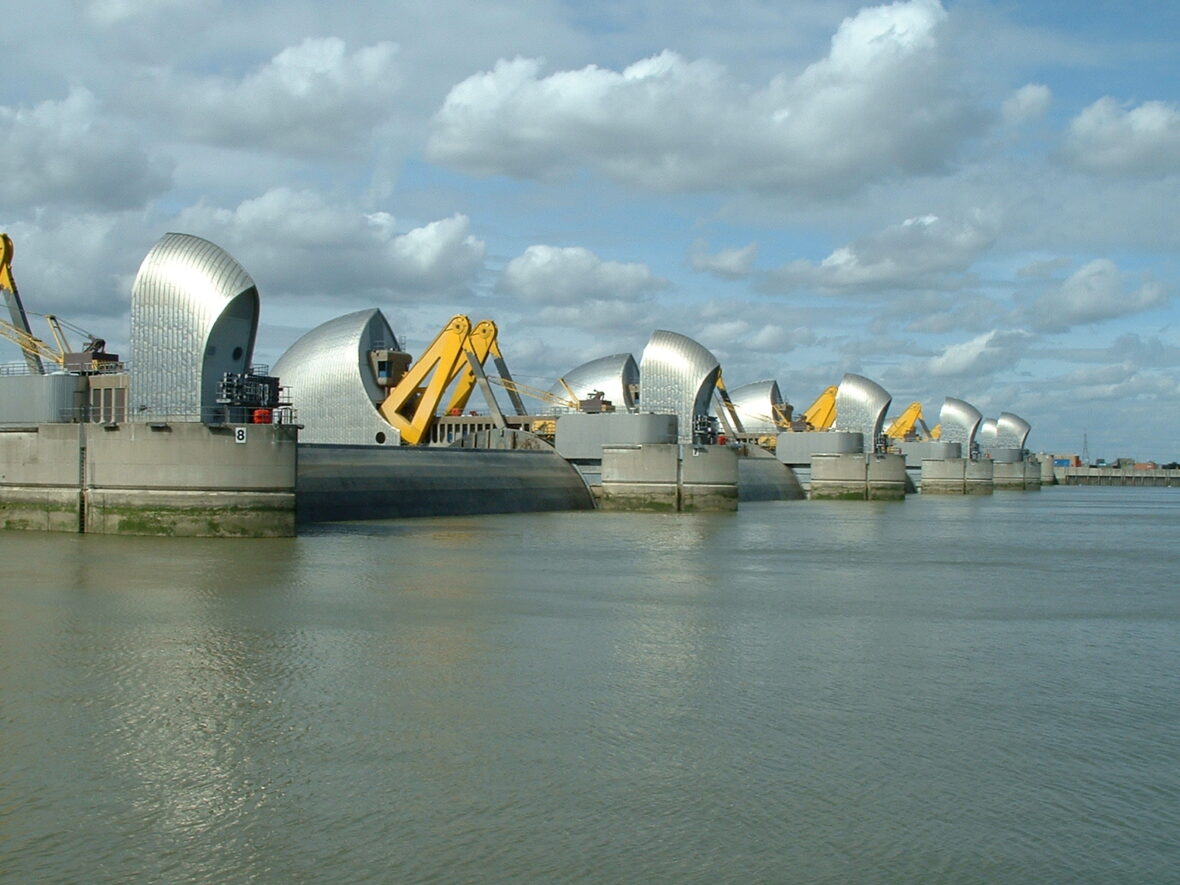The Thames is a seriously large river – there’s a reason why it is such a landmark in the city of London! However, as with any river, it’s always going to be at risk of causing damage unless kept under careful control. That is why the Thames Barrier exists. Take a look below for 30 fascinating and interesting facts about the Thames Barrier.
1. The Thames Barrier is a moveable flood defence. In fact, the UK government advises that it is one of the biggest of its kind across the whole planet.
2. The Barrier is operated through a wing of the British government known as the Environment Agency.
3. While the Thames Barrier is easily the best-known flood defence in London, it’s not the only barrier in place to help support the river and local people.
5. The Barrier is in place to ensure that some of the biggest attractions, resources and communities surrounding the river Thames don’t face complete waterlogging.
6. In fact, a study published showed that, if the sea continued to rise into the Thames, areas such as Whitechapel would be completely flooded.
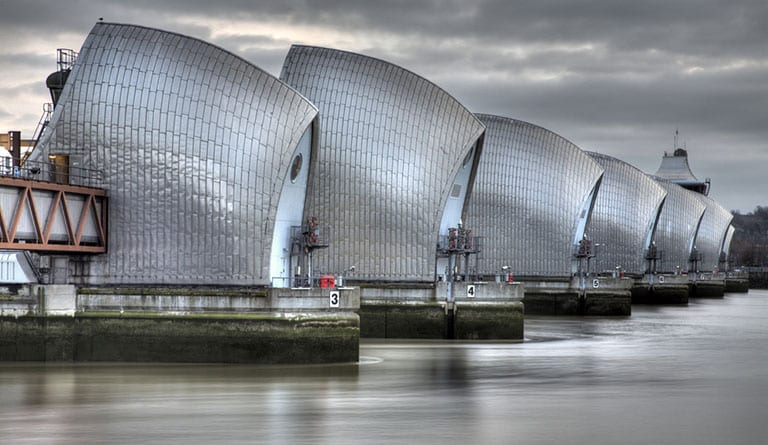
7. Without the Barrier, services such as the O2 Arena and Tower Bridge would be flooded, too.
8. The Barrier is actually a fairly modern invention. It’s been a part of the London area since 1982.
9. You’ll find the Barrier installed towards the East of London. It was largely set up to prevent London from getting washed over by changes in the tide.
10. The Barrier is not a single unit. There are ten separate gates which make up the whole of the Thames Barrier.
11. The total reach of the gates, made of steel, across the River Thames, is said to be around 520m.
12. There are four central gates in this system. These account for around 62m in length all on their own.
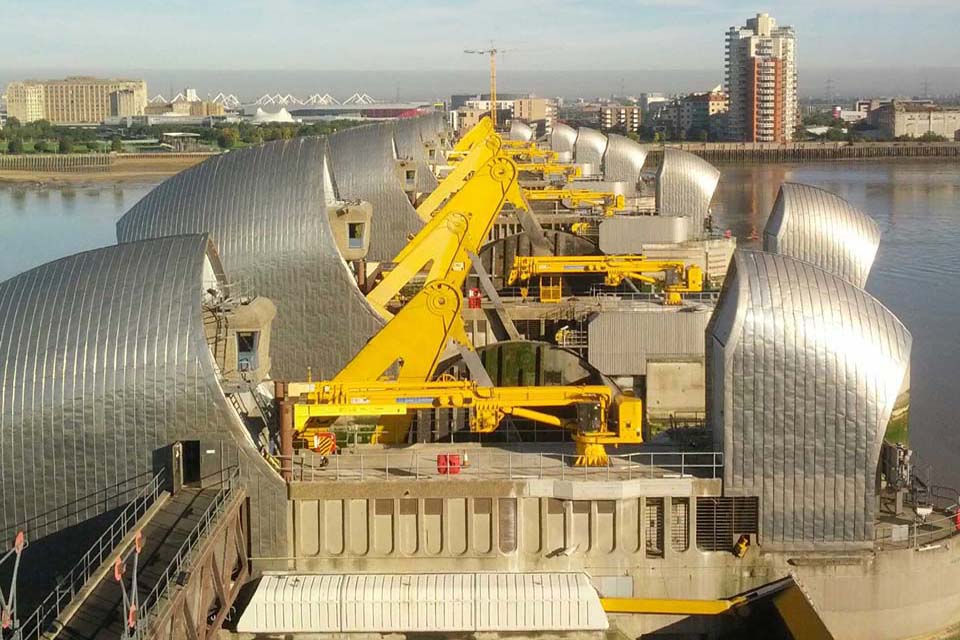
13. They are also pretty heavy! It’s thought that each of the main barrier gates – the main four, in any case – are over 3,000 tonnes in weight – each!
14. Closing the barrier takes some serious time out of operators’ schedules. This is because it can take up to an hour and a half to close in full!
15. It’s thought that the Barrier has been used more in recent years than it has over its whole lifespan.
16. However, it was fully closed for a short time in 2012. This means that there have been periods of low or quiet tide where there hasn’t been a need for the Barrier at all.
17. Anyone worried about the integrity of the Barrier shouldn’t need to worry too much. They are built with thick concrete and steel construction.
18. There is a risk that boats and vessels may connect with the Barrier. However, as demonstrated in the late 90s, it’s more likely that a ship will sink than the Barrier receive any kind of lasting damage!
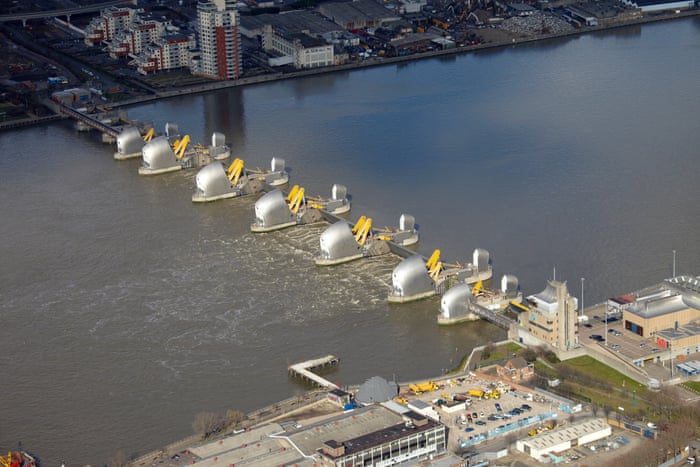
19. It’s possible to pass through the Thames Barrier, though you’re going to need to radio ahead to ask for permission. There is a control system in place where up to 5,000 vessels pass through the gates each year.
20. It’s thought that the Barrier will last until at least 2030. However, it’s thought that it may last for even longer with the right care.
21. It’s possible that the Barrier may stay in place for up to an extra 50 years.
22. London’s decision to set up a barrier in the 1980s arises after decades of flooding issues. It’s thought that a flood in Putney in 1920 was around four feet deep.
23. There are three main positions in which the Barrier will observe at any one time.
24. One position the Barrier sits in, of course, is ‘open’. This means that boats can freely pass through.
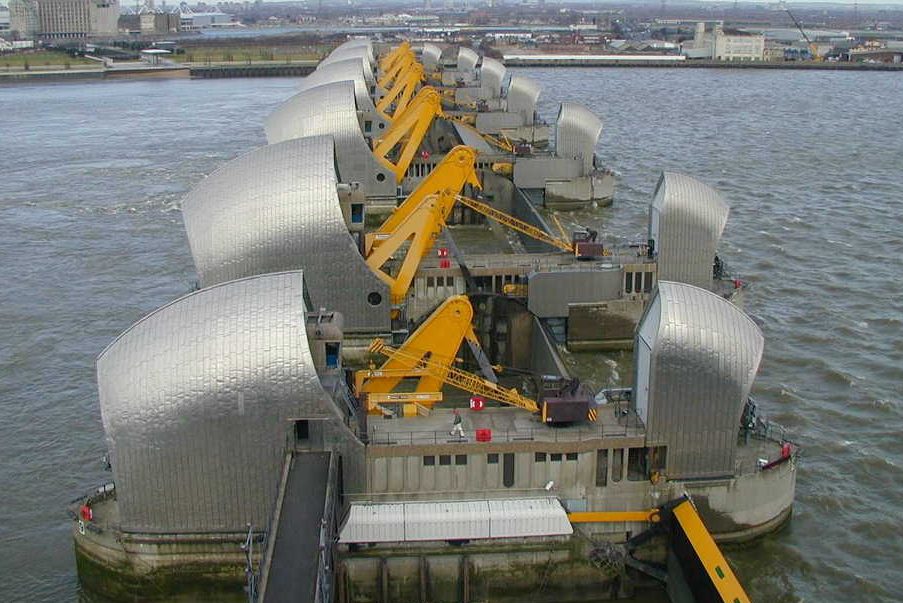
25. However, it will often be closed. This means that water is stopped from heading further up the stream and into the city itself.
26. There is also an underspill position which will allow for some water to pass through.
27. The Barrier itself is thought to protect a huge expanse of land across London. It’s said to help protect up to 48 square miles of the capital.
28. It’s believed more than 1.25 million people benefit from the barrier’s daily flood defences.
29. Building of the structure took up to eight years to complete, meaning that planning started in the 1970s, and construction completed in the 1980s.
30. It’s thought that only the Oosterschelderkering Barrier, based in the Netherlands, is larger than the Thames Barrier in terms of flood defences.

